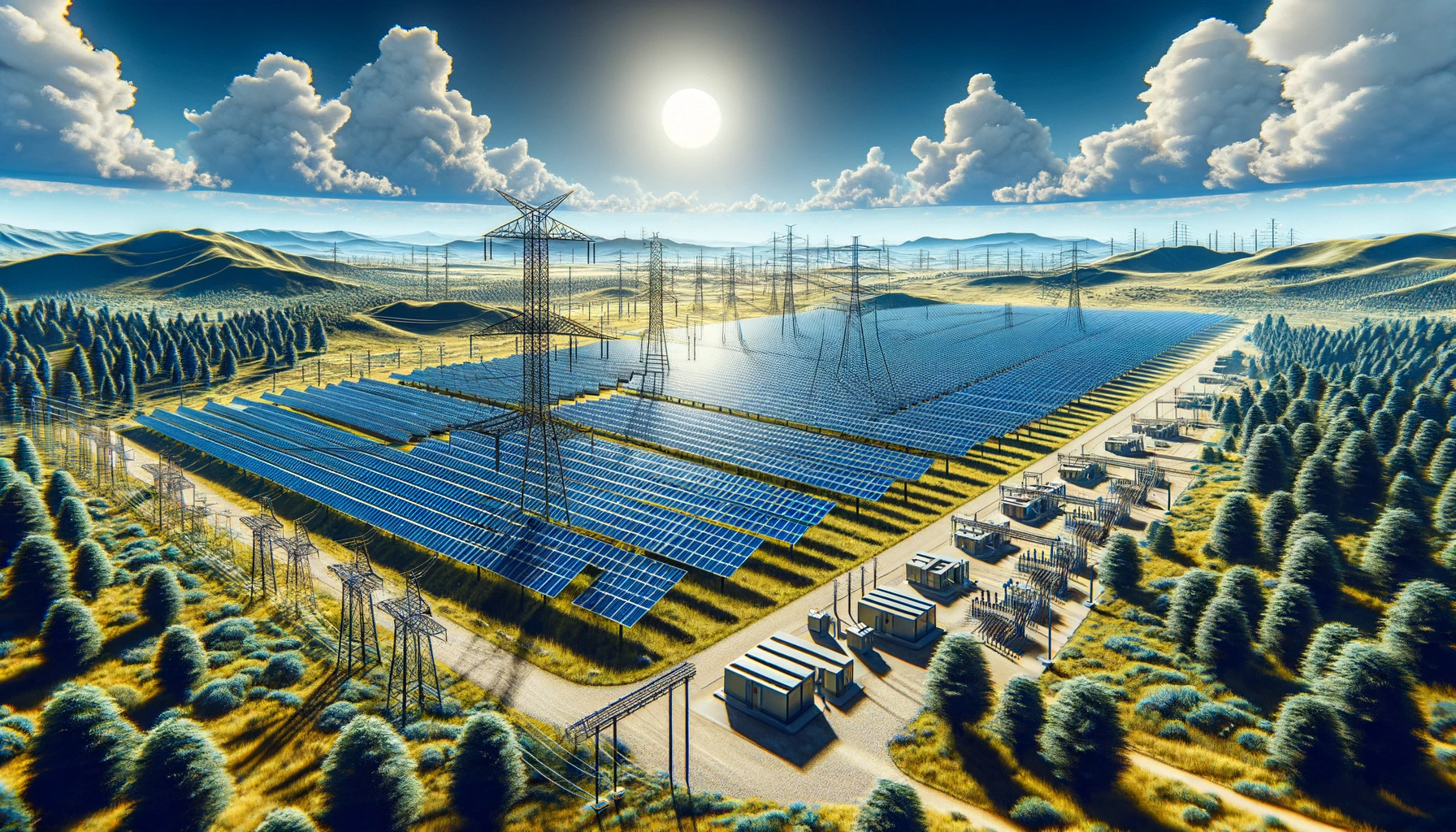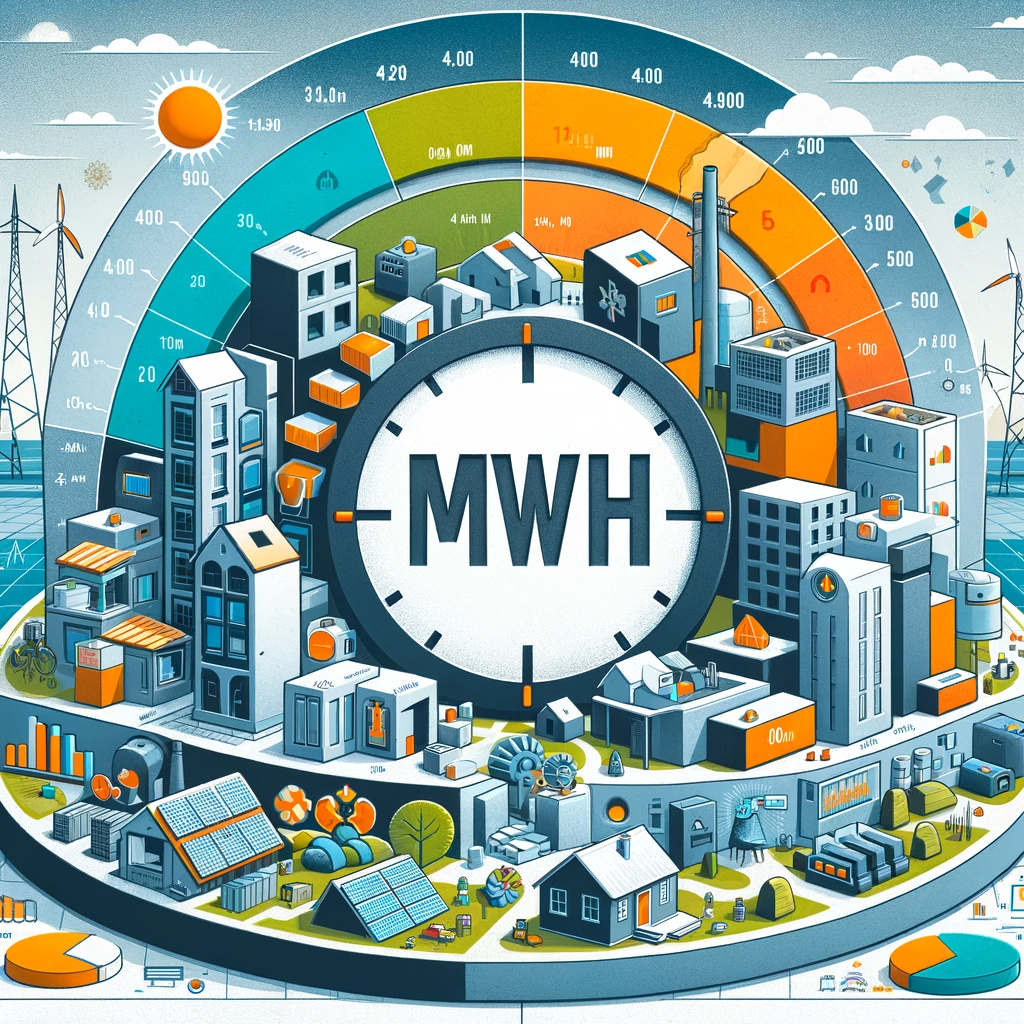Understanding Megawatt Hour (MWh): A Core Energy Measurement
The megawatt hour (MWh) is a unit of energy measurement pivotal in the global energy sector. It represents the amount of power, in megawatts, used or produced over the span of one hour. To put it into context, 1 MWh is equal to 1,000 kilowatt hours (kWh). This unit is crucial for understanding large-scale energy production and consumption, commonly used by power plants, electric utilities, and energy policy makers.
In 2020, global electricity generation was about 26,600 terawatt-hours (TWh), where 1 TWh equals 1 million MWh. This statistic underscores the magnitude of energy production and consumption on a global scale, with MWh serving as a fundamental unit for quantifying this energy.
Understanding MWh is essential for comprehending the scale of energy demands and supplies. For instance, a typical coal power plant might produce 600 MWh of electricity in an hour, enough to power hundreds of thousands of homes. Conversely, this unit also helps in measuring the energy consumption of large industrial complexes or cities over a given period.
Megawatt Hours in the Context of Global Energy Consumption
The significance of MWh becomes more apparent when analyzing global energy consumption. As of recent years, the world’s total energy consumption has been steadily increasing, with figures surpassing 160,000 TWh, which translates to 160 billion MWh. This immense figure highlights the global dependence on massive amounts of energy for sustaining various aspects of modern life.
To further break down these statistics, consider the energy consumption of a country like the United States. In 2021, the total electricity consumption was approximately 4,000 TWh, or 4 billion MWh. This data is crucial for energy planning and management, as it helps in determining the required energy production to meet such vast demands.
Moreover, understanding MWh assists in analyzing the efficiency of different energy sources. For instance, the average wind turbine generates about 6 MWh of electricity per day. Comparing this to traditional energy sources or other renewable options using the MWh unit allows for a clear understanding of their relative efficiencies and outputs.
In comparison, In 2023, the consumption of electricity in Spain reached 244.7 terawatt hours.
Electricity is at the heart of modern economies, and its share of final energy consumption is projected to rise from 20% today to over 50% by 2050 in the Net Zero Emissions by 2050 Scenario as electricity demand increases rapidly to decarbonise end-use sectors.

The Role of MWh in Renewable Energy
Megawatt hours play a significant role in assessing the impact of renewable energy sources. With the global shift towards renewables, measuring their output in MWh is key for tracking progress and setting targets. For example, the total global renewable electricity generation in 2020 was around 7,000 TWh, or 7 million MWh, showcasing the growing significance of sustainable energy sources.
This measurement is particularly important when evaluating the efficiency and viability of renewable energy projects. Solar farms, wind turbines, and hydroelectric plants all have their outputs measured in MWh, which are then compared to the energy requirements they are meant to fulfill. These comparisons are essential for energy policy and investment decisions, as they demonstrate the potential of renewables to replace traditional energy sources.
For instance, a large solar farm might produce 100 MWh on a sunny day, indicating its capacity to contribute significantly to the energy grid. Similarly, understanding the MWh output of wind farms during peak wind seasons versus calm periods is vital for efficient energy grid management.
MWh to kWh Conversion in Everyday Context
The conversion from MWh to kWh is crucial for bringing the concept of large-scale energy measurement to a more relatable scale. This conversion helps in understanding the energy consumption of households, businesses, and small-scale operations. For example, if a household consumes 30 kWh of electricity per day, this translates to approximately 0.03 MWh. Over a month, this consumption would be about 0.9 MWh.
This conversion is also vital for understanding electricity bills, where energy usage is often reflected in kWh. By converting MWh to kWh, consumers can better grasp their energy consumption patterns and make informed decisions about energy usage and efficiency.
Furthermore, the MWh to kWh conversion is essential for small-scale renewable energy systems. Home solar panel installations, for instance, might generate a few kWh per day, translating to a certain fraction of a MWh. This measurement helps homeowners understand their contribution to energy savings and environmental sustainability.
The Essentiality of Megawatt Hours in Energy Discourse
The megawatt hour is more than just a unit of measurement; it’s a critical component in the discourse of global energy. It provides a standardized scale for measuring and comparing energy production and consumption across various sources and geographies. Understanding MWh, and its conversion to kWh, is essential for anyone involved in energy management, policy-making, and sustainability initiatives.
As the world continues to grapple with energy challenges and transitions towards sustainable sources, the role of MWh in quantifying and understanding these changes remains pivotal. It’s a unit that not only measures energy but also symbolizes the scale of our global energy journey.
The world is on course to add more renewable capacity in the next five years than has been installed since the first commercial renewable energy power plant was built more than 100 years ago.




